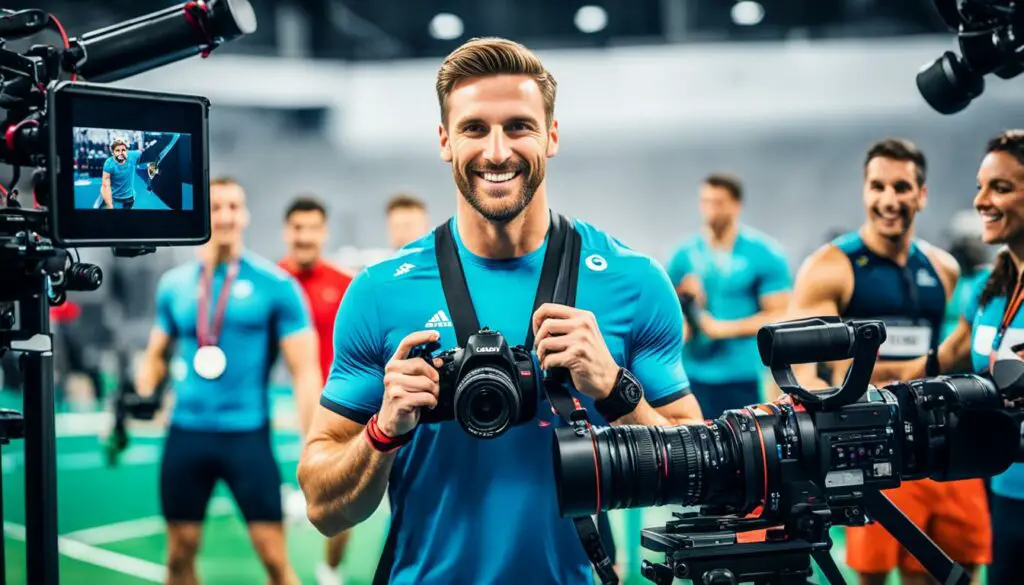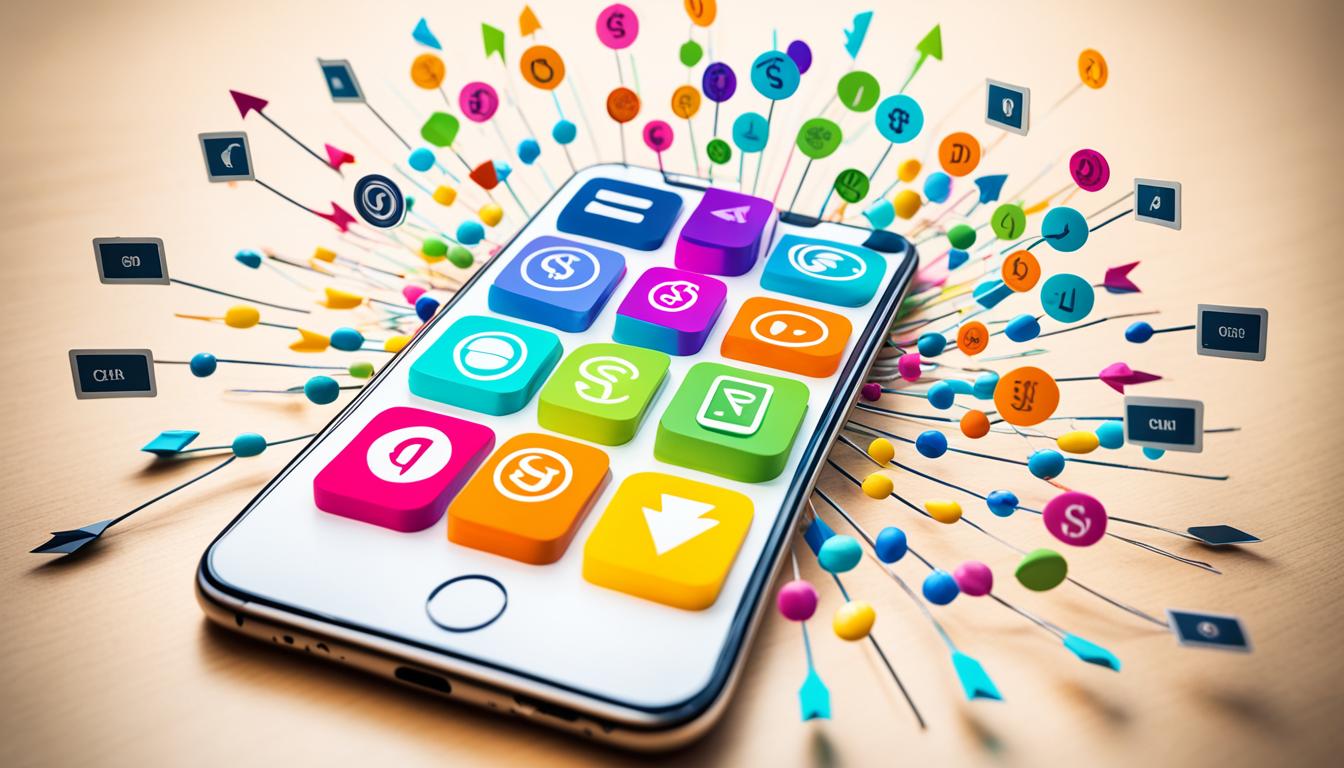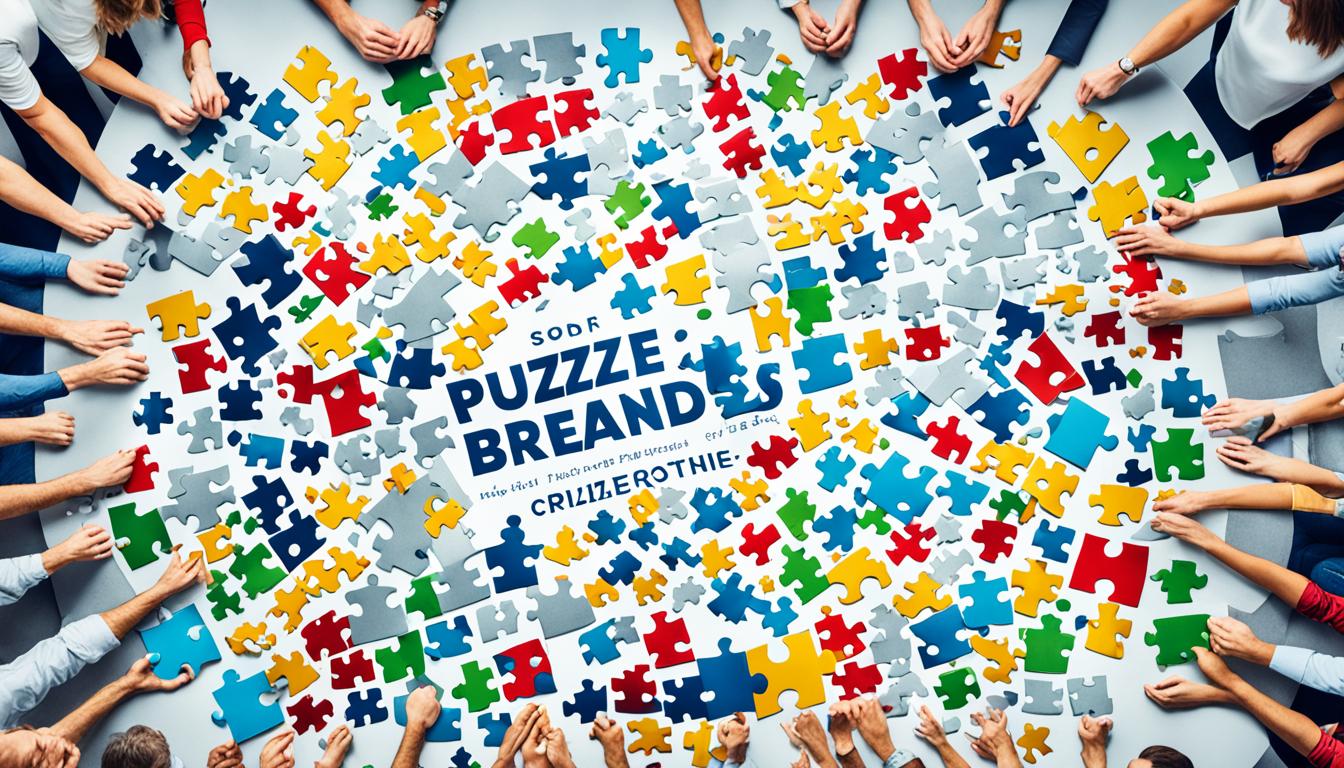The Olympic Games is one of the most globally anticipated and celebrated sporting events, creating a prime opportunity for brands to engage with massive audiences. However, marketing during the Olympics requires careful planning and execution to stand out in a crowded field and maximize brand visibility. In this article, we will explore effective marketing strategies specifically tailored for the Olympics, including tactics and promotions that can help brands reach their target audience and drive engagement.
Key Takeaways:
- Olympic marketing involves unique challenges, with the postponement of the 2020 Summer Olympics emphasizing the need for digital content creation.
- Thinking globally and acting locally is crucial in Olympic marketing, catering to the interests of different audiences worldwide.
- Sports marketing during the Olympics allows brands to connect with a passionate and loyal audience, influencing consumer behavior.
- Targeted advertising and customized messaging can effectively resonate with different segments of the Olympic audience.
- Agility is essential in Olympic advertising, adapting strategies to unexpected circumstances and changing consumer behavior.
Thinking Globally and Acting Locally: An Innovative Approach to Olympic Marketing
When it comes to marketing the Olympics, it’s crucial to think globally but act locally. The Director of Digital Engagement for the Olympics emphasizes the importance of catering to the diverse interests and preferences of audiences worldwide. This innovative approach involves creating digital content that resonates with fans on a personal level, providing them with immersive and personalized experiences.
An integral part of this marketing strategy is the use of platforms like the Olympic Channel, which allows fans from all corners of the globe to connect and engage with the games. By leveraging the reach and accessibility of digital media, the Olympics’ digital content aims to capture the attention and captivate the hearts of fans around the world.
In addition to digital platforms, collaborations with Olympic athletes on YouTube have proved invaluable in bringing fans closer to the action. These collaborations provide a behind-the-scenes look into the lives and journeys of the athletes, creating a sense of intimacy and connection that resonates with fans on a deep level.
This global and local marketing approach not only expands the reach of Olympic content but also fosters a sense of inclusivity and personalization for fans. By tailoring content to different regions and demographics, the Olympics can effectively engage fans from various cultures and backgrounds, providing a truly immersive and meaningful experience.
To provide a visual representation of this innovative approach, take a look at the table below that showcases the digital content initiatives undertaken by the Olympics to create personalized experiences for fans:
| Digital Content Initiatives | Description |
|---|---|
| Olympic Channel | A platform dedicated to sharing exclusive athlete stories, highlights, and behind-the-scenes content from the Olympics. |
| Collaborations with Olympic athletes on YouTube | Partnering with athletes to create original content that provides fans with unique insights into their journey and preparation for the games. |
| Personalized interactive experiences | Creating interactive experiences on digital platforms that allow fans to feel a part of the Olympic journey and explore their favorite sports and athletes. |
This innovative approach to Olympic marketing aims to forge strong connections between fans and the games by catering to their individual interests and preferences. By thinking globally and acting locally, the Olympics can create personalized experiences that resonate with fans worldwide, making the event truly unforgettable.
The Power of Sports Marketing: Reaching a Passionate Audience
Sports marketing has proven to be highly effective, especially during the Olympics, in reaching a passionate and loyal audience. Brands like Red Bull have successfully associated their products with the energy and values of sports, leveraging the emotional connection between sports and consumers to resonate and influence behavior.
Sports marketing effectiveness can be attributed to the deep emotional connection that fans have with sports. This emotional connection stems from the excitement, joy, and sense of belonging that sports provide. By aligning their brands with the passion and enthusiasm of sports, marketers can tap into this emotional connection and establish a strong bond with their target audience.
When brands successfully connect with sports fans on an emotional level, they become more than just products or services. They become an integral part of the fan’s sports experience, adding value and enhancing their enjoyment. This emotional connection not only influences consumer behavior but also fosters brand loyalty and advocacy.
Brands can leverage sports marketing to influence consumer behavior in various ways. They can position themselves as a trusted partner that understands the needs and aspirations of sports fans, creating products and experiences tailored to their desires. By utilizing compelling storytelling and engaging content, brands can also shape consumers’ perceptions, attitudes, and preferences, ultimately driving purchasing decisions.
This emotional connection between sports and consumers creates a unique opportunity for brands to make a lasting impact. By associating themselves with the passion, excitement, and values of sports, marketers can effectively reach and engage a passionate audience during the Olympics and beyond.
Examples of Sports Marketing Effectiveness
Red Bull is a prime example of a brand that has successfully harnessed the power of sports marketing. By sponsoring extreme sports events and athletes, Red Bull has become synonymous with thrill-seeking adventures and adrenaline-pumping experiences. The brand’s association with sports has allowed it to create a strong emotional connection with its target audience, positioning itself as a symbol of energy, excitement, and pushing boundaries.
Another example is Nike, which has built its brand around the values of athleticism, determination, and excellence. Through powerful advertising campaigns featuring top athletes, Nike has inspired and motivated sports fans worldwide. By tapping into the emotional connection that fans have with their favorite athletes and teams, Nike has effectively influenced consumer behavior, driving brand loyalty and sales.
Overall, sports marketing offers significant opportunities for brands to reach a passionate audience, forge strong emotional connections, and influence consumer behavior. By leveraging the power of sports, marketers can captivate audiences and drive brand engagement to new heights.
| Benefits of Sports Marketing | Example |
|---|---|
| Reaches a passionate and loyal audience | Gatorade’s sponsorship of professional athletes and teams |
| Strengthens brand loyalty and advocacy | Adidas’ collaboration with Beyoncé in the launch of Ivy Park |
| Influences consumer behavior and purchasing decisions | Under Armour’s partnership with Stephen Curry |
| Enhances brand reputation and credibility | Rolex’s longstanding association with prestigious sporting events |
Know Your Audience: Reaching a Wide Range of Viewers
The success of marketing campaigns during the Olympics depends on a deep understanding of the diverse audience demographics. With millions of viewers spanning various age groups and interests, it is essential to tailor advertising messages to resonate with different segments of the audience.
Targeted advertising plays a significant role in engaging both casual watchers and die-hard sports fans. By leveraging platforms such as TV ads, display ads, and native ads, brands can reach specific audience segments with precision and relevance.
Targeted Advertising Opportunities:
- TV ads: By strategically placing commercials during popular Olympic events, brands can capture the attention of a wider audience.
- Display ads: Displaying visually appealing and contextually relevant ads on sports-related websites and mobile apps can attract the interest of passionate sports enthusiasts.
- Native ads: Seamlessly integrated within online content, native ads blend in with the surrounding editorial material, delivering a non-disruptive advertising experience.
When crafting targeted ad campaigns, marketers should consider the interests, behaviors, and preferences of their desired audience segments. By aligning messaging with the unique characteristics of these groups, brands can achieve greater engagement and impact.
| Olympic Audience Demographics by Age Group | Percentage of Total Olympic Viewers |
|---|---|
| 18-34 years old | 42% |
| 35-54 years old | 32% |
| 55 years old and above | 26% |
Reaching and engaging both casual watchers and die-hard sports fans can be achieved by incorporating targeted advertising strategies that align with specific audience segments. By understanding the demographics of the Olympic audience and leveraging the available ad opportunities, brands can maximize their marketing efforts during this highly anticipated global event.
Agility in Olympic Advertising: Adapting to Changing Circumstances
Marketing during the Olympics requires nimble strategies and the ability to pivot during times of uncertainty and unexpected situations. With the dynamic nature of the event and unforeseen circumstances like the COVID-19 pandemic, brands must be prepared to adapt their advertising approaches to effectively reach target audiences facing abnormal circumstances.
One effective strategy is to focus on athlete stories that resonate with sports fans’ tenacity and passion. By highlighting the hard work, dedication, and determination of athletes, brands can captivate their target audience and maintain an emotional connection despite challenging circumstances.
For example, Lacoste, the official outfitter of the French Olympic team, successfully adapted their marketing efforts during the pandemic. With the postponement of the 2020 Summer Olympics, Lacoste shifted their focus to showcasing the resilience of athletes and inspiring fans to stay motivated. They created a campaign that featured athletes training at home and shared their stories to provide a sense of unity and hope among sports enthusiasts.
By embracing agile marketing strategies, brands can stay relevant, maintain engagement with their target audience, and navigate unexpected circumstances. The ability to adapt and pivot allows marketers to leverage opportunities that arise during challenging times, ensuring that their messaging continues to resonate and connect with consumers.
Timing is Everything: Reaching Audiences at the Right Time
The success of sports marketing, especially during major events like the Olympics, often depends on strategic timing. Marketers need to be intentional with their advertising efforts to ensure maximum visibility and audience engagement. This section explores the importance of timing in Olympic advertising and how it can create buzz and excitement among viewers.
Maximizing Audience Engagement during Sporting Events
One of the key aspects of strategic advertising during the Olympics is aligning content and ads with specific sporting events. By synchronizing marketing efforts with the schedule of events, marketers can capture the attention of viewers who are already tuned in for their favorite competitions. Whether it’s the opening ceremony, track and field events, or swimming races, targeting ads to correspond with these moments can significantly enhance audience engagement.
To illustrate the impact of strategic timing, let’s consider an example. Table 6.1 shows the viewership trends for the men’s 100m final during the last three Olympics, along with the corresponding advertising rates. The data demonstrates how the timing of the race influences both the number of viewers and the cost of advertising.
| Olympic Year | 100m Final Timing | Viewership (in millions) | Advertising Rates (per 30s spot) |
|---|---|---|---|
| 2016 Rio Olympics | Evening | 15.6 | $500,000 |
| 2012 London Olympics | Afternoon | 10.3 | $350,000 |
| 2008 Beijing Olympics | Evening | 12.8 | $450,000 |
As we can see from the table, the evening slot for the men’s 100m final during the Rio Olympics attracted the highest viewership and commanded the highest advertising rates. This indicates the significant impact of timing on both audience engagement and the cost of advertising.
Cultivating Buzz and Excitement
Strategic timing of advertising not only maximizes audience engagement during sporting events but also helps create buzz and excitement leading up to and during the Olympics. By carefully planning content releases, teasers, and countdowns, marketers can generate anticipation and build excitement among fans. Leveraging the power of social media platforms and influencers can amplify this buzz and reach a wider audience.
For example, during the 2016 Olympics, Nike launched a series of captivating advertisements featuring Olympic athletes in action. These ads were strategically released in the weeks leading up to the games, generating a wave of excitement and anticipation among sports enthusiasts. The timely release of content created a buzz that carried over into the Olympics, driving brand engagement and boosting Nike’s visibility during the event.
In conclusion, the strategic timing of advertising plays a crucial role in reaching audiences during the Olympics. By aligning marketing efforts with specific sporting events and capitalizing on the buzz and excitement surrounding the games, marketers can maximize audience engagement and create a lasting impact. The next section will explore the influence of partnering with influencers in reaching a broader demographic of fans.
Partnering with Influencers for Maximum Reach
Integrating influencer marketing into Olympic and sports marketing strategies can be a game-changer when it comes to maximizing reach and connecting with younger generations, particularly Gen Z and Millennials. Influencers hold a position of trust and credibility with their audiences and have the power to influence consumer behavior in a way that traditional marketing methods may struggle to achieve.
By partnering with social media influencers who have a strong following and influence in the sports industry, brands can tap into their audience base and expand their reach significantly. Research shows that a significant percentage of adults between the ages of 18 and 34 trust influencer opinions and endorsements, making them an ideal medium for reaching the younger demographic.
One of the key advantages of influencer marketing in sports is its ability to overcome challenges brought about by reduced cable viewership. As more and more people turn to streaming services and online content consumption, partnering with influencers can help brands stay relevant and engage with audiences where they spend the most time – on social media platforms.
Building Trust and Credibility
Trust and credibility are crucial components of any successful marketing strategy, particularly when targeting younger generations. Influencers, who are often seen as authentic and relatable figures, can help brands establish trust and credibility with their audiences. When an influencer promotes a brand or product, their followers perceive it as a genuine recommendation, leading to increased brand engagement and consideration.
Furthermore, influencers have the ability to create personalized content that resonates with their audience’s interests and values. By aligning the brand with an influencer known for their passion for sports, for example, marketers can leverage the emotional connection between sports and fans to drive brand engagement and loyalty.
Reaching Gen Z and Millennials
The influence of Gen Z and Millennials cannot be ignored in today’s marketing landscape. These generations make up a significant portion of the Olympic viewership and consumer base, making them a prime target for brands. Integrating influencer marketing allows brands to reach these younger demographics in a way that connects with their interests and preferences.
For example, partnering with a popular lifestyle influencer who is also a sports enthusiast allows brands to tap into multiple target markets simultaneously. This approach helps broaden the brand’s appeal and amplifies its reach among Gen Z and Millennial audiences.
By leveraging the power of influencer marketing in sports, brands can achieve maximum reach, enhance trust and credibility with their target audiences, and establish a strong connection with Gen Z and Millennial consumers. The next section will delve into the power of social media in Olympic marketing, highlighting how brands can further leverage digital platforms to engage and captivate global audiences.
Leveraging the Power of Social Media in Olympic Marketing
Social media platforms have revolutionized the way brands approach marketing during the Olympics. With the ability to reach millions of global users, these platforms provide exceptional opportunities to maximize advertising potential and engage audiences on a massive scale.
Campaigns like Ford’s “We Are All Fans” and NBC’s GIF “torch relay” during the 2016 Olympics exemplify the power of social media in Olympic marketing. By leveraging popular platforms and partnering with influencers, these campaigns generated excitement and persuaded more people to tune in to the games. Through strategic placement on social media, brands were able to capture the attention and interest of a vast audience.
Hashtags have also played a significant role in engaging audiences during the Olympics. Creating unique and memorable hashtags specific to a brand or campaign can help generate buzz and encourage users to share content related to the Olympics. This not only increases brand visibility but also stimulates user-generated content, leading to greater engagement and participation.
To further engage audiences, brands have used social media platforms to provide exclusive content. By offering behind-the-scenes footage, athlete interviews, and immersive experiences, brands can create a sense of exclusivity that keeps fans coming back for more. This type of content fosters emotional connections and builds a dedicated and engaged following.
Moreover, it is worth noting that social media platforms offer diverse advertising formats that can be specifically tailored for the Olympics. From sponsored posts to carousel ads and interactive stories, brands have numerous options to creatively showcase their products or services. These formats allow for personalized and targeted messaging, maximizing the effectiveness of advertisements and attracting the attention of potential customers.
Table: Examples of Successful Social Media Campaigns during the Olympics
| Brand | Campaign | Platform | Results |
|---|---|---|---|
| Ford | “We Are All Fans” | Twitter, Facebook, Instagram | Increased brand mentions by 65% |
| NBC | GIF “torch relay” | Twitter, Tumblr | 15 million+ impressions |
| Coca-Cola | “Share a Coke with an Olympian” | Facebook, Instagram | 200,000+ user-generated content posts |
By leveraging the power of social media during the Olympics, brands can maximize their advertising potential, engage audiences, and create lasting connections with fans. The ability to generate excitement, drive participation, and foster brand loyalty makes social media an indispensable tool in the modern Olympic marketing landscape.
Growing Your Own Audience: Building a Dedicated Fanbase
Building a dedicated fanbase and reducing dependence on third-party outlets is essential for long-term success. By focusing on growing their own audiences on social media and their website, Team GB has successfully built a loyal and engaged fanbase. This strategic approach allows them to control their brand story and promotion, ensuring consistency and authenticity in their messaging.
One of the key advantages of growing owned audiences is the ability to offer proprietary content that can’t be found elsewhere. Team GB has utilized this opportunity to provide their fans with exclusive behind-the-scenes access, athlete interviews, and in-depth coverage of their journey to the Olympics. This unique content strengthens the emotional connection between the team and their fans, fostering a sense of loyalty and engagement.
Personalization is another powerful tool in building a dedicated fanbase. By gathering data and insights from their owned audiences, Team GB can tailor their content and messaging to match the specific interests and preferences of their fans. This personalized approach not only enhances the audience’s experience but also increases the likelihood of their continued engagement and support.
Direct Audience Connection
When building a dedicated fanbase, establishing a direct connection with the audience is crucial. Team GB has leveraged their owned audiences to interact directly with their fans through various platforms. By actively responding to comments, questions, and feedback, they create a sense of community and make their fans feel heard and valued.
Furthermore, Team GB’s website serves as a hub for engaging with their dedicated fanbase. It provides a centralized location for accessing exclusive content, participating in contests or giveaways, and staying up to date with the latest news and updates. This direct connection strengthens the bond between the team and their fans, fostering a loyal and committed community.
Leveraging Social Media
Social media platforms play a significant role in growing owned audiences and building a dedicated fanbase. Team GB has recognized the importance of leveraging these platforms to engage with their fans effectively. They utilize social media channels such as Facebook, Twitter, Instagram, and YouTube to share exclusive content, behind-the-scenes stories, and live updates from the Olympics.
Through consistent and strategic social media campaigns, Team GB creates buzz and excitement among their dedicated fanbase, generating increased visibility and reach. These campaigns aim to capture the attention of potential new fans while keeping the existing fanbase engaged and enthusiastic about the team’s journey.
| Benefits of Growing Owned Audiences | Examples |
|---|---|
| Control over brand story and promotion | Team GB’s website and social media presence allow them to craft their narrative and showcase their values and achievements. |
| Increased opportunities for personalization | Team GB uses data from their owned audiences to tailor their content and provide personalized experiences, strengthening the bond with their fans. |
| Direct audience connection | Team GB engages with their fans directly through social media, responding to comments and fostering a sense of community. |
Creating Exclusive Athlete Content: Giving Fans Insider Access
Exclusive athlete content plays a pivotal role in building stronger connections between fans and the brand. By providing fans with unique and behind-the-scenes experiences, brands, like Team GB, can create a sense of exclusivity and intimacy.
Team GB’s marketing strategy brilliantly captured the essence of the athletes’ lives and journeys to the Olympics through captivating videos and informative posts. The content gave fans a rare perspective and made them feel closer to the athletes, fostering a deep emotional connection.
Such proprietary athlete content taps into fans’ aspirations and desires to be a part of the athletes’ journey. By offering this exclusive content, brands can go beyond typical promotional content, establishing themselves as genuine supporters of the athletes’ dreams and aspirations.
The emotional connection built through exclusive athlete content ultimately translates into a dedicated and engaged fan following. Fans who feel a personal connection with the athletes are more likely to be loyal to the brand and actively engage with its campaigns.
Insider access to the athletes’ lives and experiences creates a compelling narrative that resonates with fans on a deeper level. It transforms the brand into a trusted companion on the athletes’ journey and motivates fans to share their passion and support on social media and other platforms.
Through this unique and intimate content, brands can differentiate themselves from competitors, strengthen their brand image, and cultivate a loyal community of fans who will eagerly champion their brand.
 |
Tying Marketing Plans to Organizational Goals: Driving Success
Aligning marketing with overall organizational goals is essential in showcasing the value and impact of marketing initiatives. Team GB’s marketing strategies for the Olympics were specifically designed to increase sponsorship revenue, which played a crucial role in funding the event. By aligning marketing efforts with this goal, the marketing team was able to demonstrate how the growth of social media audiences and engagement would attract more sponsors.
Securing support and investment in marketing initiatives requires proving the value of marketing and its direct impact on revenue and sponsorship. By showcasing how marketing strategies align with organizational goals, such as increasing sponsorship revenue, brands can demonstrate the effectiveness and importance of marketing in driving business success.
Impact of Marketing on Revenue and Sponsorship
| Marketing Initiative | Impact on Revenue and Sponsorship |
|---|---|
| Growing social media audiences and engagement | Attracts more sponsors and increases sponsorship revenue |
| Creating compelling athlete content | Enhances brand visibility and appeal to potential sponsors |
| Targeted advertising campaigns | Generates revenue from advertising partnerships |
| Building a dedicated fanbase | Increases brand loyalty and attracts loyal sponsors |
By tying marketing plans to organizational goals and highlighting the impact on revenue and sponsorship, brands can secure the necessary support and investment in marketing initiatives. This approach enables them to drive success and achieve their objectives, both during major global events like the Olympics and in the long term.
Conclusion
Successful marketing strategies for the Olympics require a combination of digital content creation, personalized experiences, targeted advertising, agility in adapting to changing circumstances, and leveraging the power of social media and influencers. By implementing these strategies, brands can effectively captivate global audiences and drive brand engagement during the world’s premier sports event.
Building a dedicated fanbase is essential for long-term success. By growing owned audiences on social media and websites, brands have the opportunity to control their brand story, provide exclusive content, and foster direct connections with fans. This enables brands to create emotional connections with their audience and cultivate a loyal and engaged following.
Additionally, the creation of exclusive athlete content gives fans an insider perspective and strengthens their connection to the brand. Sharing athletes’ lives and journeys through videos and posts provides unique behind-the-scenes experiences, building emotional connections and further engaging the audience.
Furthermore, aligning marketing plans with organizational goals is crucial for driving success. Linking marketing activities to broader objectives, such as increasing sponsorship revenue or attracting more sponsors, allows marketing teams to demonstrate the value and impact of their efforts. This alignment helps secure support and investment in marketing initiatives, ultimately contributing to the overall success of the Olympic marketing strategy.
FAQ
What was the marketing strategy for the 2020 Summer Olympics in Tokyo?
The marketing strategy for the 2020 Summer Olympics in Tokyo focused on digital content creation and personalized experiences to keep fans engaged during the postponement caused by the pandemic.
How did the Olympics approach marketing globally and locally?
The Olympics employed a global and local marketing approach by creating digital content that catered to the interests of different audiences worldwide. The use of platforms like the Olympic Channel and collaborations with Olympic athletes on Youtube helped engage fans and connect them in new ways.
How effective is sports marketing during the Olympics?
Sports marketing, especially during the Olympics, has proven to be highly effective in reaching a passionate and loyal audience. The emotional connection between sports and consumers allows brands to resonate and influence behavior.
How can brands reach a wide range of viewers during the Olympics?
Understanding the demographics of the Olympic audience is crucial for effective marketing. Customizing advertising messages and utilizing targeted ad opportunities like TV ads, display ads, and native ads can help resonate with different segments of the audience, including casual watchers and die-hard sports fans.
How should brands adapt their advertising strategies during the Olympics?
Marketing during the Olympics requires agility, especially when unexpected circumstances like the pandemic arise. Brands need to be ready to adapt their advertising strategies to reach target audiences facing uncertain and abnormal circumstances. This may involve focusing on athlete stories and resonating with sports fans’ tenacity.
Why is timing important in Olympic advertising?
Timing is crucial in sports marketing, including advertising during the Olympics. Marketers need to schedule content and ads to correspond with sporting events to ensure maximum visibility. The day of the week and timing of the ads can impact audience engagement.
How can brands leverage influencer marketing during the Olympics?
Integrating influencer marketing into Olympic and sports marketing strategies can help maximize reach and establish credibility with younger generations. Partnering with social media influencers can overcome challenges like reduced cable viewership and expand the brand’s reach.
What role does social media play in Olympic marketing?
Social media platforms offer great opportunities for brands to maximize their advertising potential during the Olympics. Brands have successfully used hashtags and exclusive content on social media to engage audiences and generate excitement.
How can brands build a dedicated fanbase during the Olympics?
Building a dedicated fanbase and reducing dependence on third-party outlets is essential for long-term success. Brands can focus on growing their own social media audiences and website to control their brand story and promotion.
What is the benefit of creating exclusive athlete content during the Olympics?
Exclusive athlete content can create stronger connections between fans and the brand. Showcasing the athletes’ lives and journeys to the Olympics gives fans a unique perspective and makes them feel closer to the athletes.
How important is it to tie marketing plans to organizational goals?
Linking marketing plans and activities back to broader organizational goals is crucial for demonstrating their value and impact. It helps secure support and investment in marketing initiatives by showcasing how they contribute to revenue and sponsorship.



